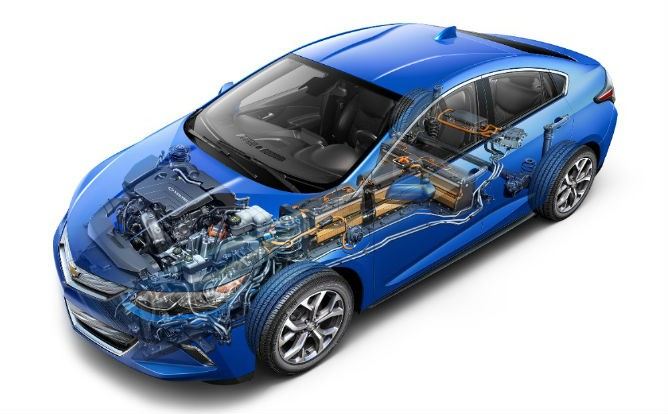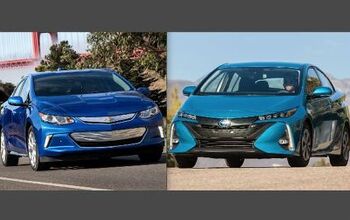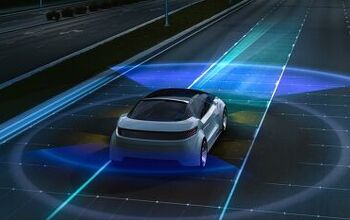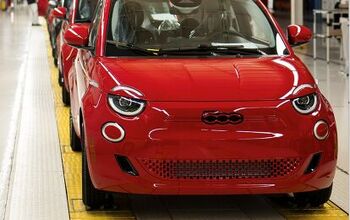Which Saves More Gasoline? Toyota Prius or Chevrolet Volt?
The hybrid Toyota Prius is famous for saving fuel and the extended-range electric Chevrolet Volt is touted in that department as well, but which is a better tool for the job?
Obviously, there are many considerations that go into buying a car, but since saving fuel is a prime reason for these models’ existence, can it be said their fuel-saving effectiveness is reflected in their popularity?
Last year both cars were all-new revised models, and although inexpensive gasoline has led many consumers to trucks and SUVs, among buyers of this class of vehicle who still care, the Prius soundly trounces the Volt.
Even though Prius sales disappointed last year and were 13 percent down, Toyota sold four of its Liftback hybrids for every Volt delivered in its best year ever, and this was despite the Volt being a better gas miser.
Among full-range/power plug-in hybrids, the Volt has the biggest battery available enabling an EPA-rated 53 miles of electric range making it a part-time EV and a 42 mpg hybrid the rest of the time.
As of last July – the latest report Chevrolet supplied citing GM OnStar telematics data – 90 percent of Volt trips were gas free, and of all miles traveled, 60 percent were gas free. In other words, among Volt drivers monitored by GM in the real world, they traveled 40 percent of the time burning gas, and 60 percent on the battery gas free.
What’s more, the vast majority of those Volts were first-generation with range of 35 or 38 miles rather than the 53 miles of the 2016/17 Volt.
So, even though the Prius is rated 52 mpg – 56 mpg for the Two Eco trim, which comprises 5.5 percent of sales – it winds up using more gas and emitting more greenhouse gases in many cases than the Volt – new style and even first-generation style.
Actually, this a complex question we’re trying to simplify based on averaged assumptions and your actual results may vary. Any way you slice it, however, including when considering the EPA’s “utility factor” which calculates an effective 77 MPGe, odds are good for the Volt.
Putting A Finer Point on Things
One elemental way of looking at the question of gas usage is by nationally averaged EPA figures folded in with GM data.
Based on 15,000 miles per year which the EPA anticipates, a Chevy Volt that averages 40 percent fuel usage actually only burns gas for 6,000 of those 15,000 miles.
At 42 mpg, that’s 143 gallons of gas used annually. Assuming the $2.39 national average price today of regular gasoline, that’s $342 per year on fuel.
As for a 52 mpg Prius, it burns gas for all 15,000 of those 15,000 miles, consuming 288 gallons, or $688 worth per year.
Of course, the Volt owner would need to use electricity for the EV miles, and unless “free” charging was available – such as at an employer’s or as excess from solar – the electric bill would need to also be factored.
The EPA figures .12 cents per kWh as the national average. No doubt your cost may be higher or lower, but going with that, 9,000 EV miles at 31 kWh per 100 miles equals 2,790 kWh. At .12 cents per kWh, that’s $335 electricity plus $342 gas for $677 total Volt energy costs versus the Prius’ $688 for gas.
So, at today’s low gas prices, the Volt may make a negligible difference in dollars, but it does save more in gasoline volume.
Meanwhile, on the big picture level, the Prius does actually save more gas.
How so? On a fleet basis, as some enthusiasts are quick to observe, Toyota’s resounding popularity, lower up-front cost, time on the market and other factors mean far more are sold, and each one displaces a 26 mpg average car.
The 98,863 “Prii” sold during 2016, assuming each travels 15,000 annual miles, would use approximately 28.5 million gallons per year.
This also assumes 52 mpg – and considering 5.5 percent are the 56 mpg Two Eco, this number would be less but since 94.5 percent are the 52 mpg variety, we’ll assume 100 percent in the interest of simplicity for what is already a hypothetical scenario.
So, if one imagines 98,863 average 26 mpg cars – with half the mpg of the Prius, these would burn 57 million gallons of gas, and the Prius theoretically saves at least 28.5 million gallons.
Of course these numbers are hypothetical, and not all Prius models sold in 2016 were the new fourth-generation 2016 variety. Some were the 50 mpg leftover generation-three model, but this is a gauge just for comparison’s sake.
And the same truth would apply for the Volt, as it also was in a transition year to generation two, so older 37-mpg leftovers would have skewed the numbers. This year however far more of the new vehicles will be sold, and assumptions should otherwise carry forward.
So, of the 24,739 Volts sold last year, assuming 6,000 miles (out of 15,000) of gas-burning hybrid mode at 42 mpg, they would use just 3.5 million gallons of gas.
Compared to 24,739 conventional 26 mpg cars, which would use 14.3 million gallons, the Volt would save 10.8 million gallons. If four times as many Volts had been sold to match the Prius’ sales volume, they would have saved 43.2 million theoretical gallons to the Prius’ 28.5 million gallons.
Therefore the Volt only saves less gas on an overall basis because it sells less, but per car it saves much more.
Another Way to Slice it
If you think that was at all complicated, the EPA is from the government, and they are here to help.
The feds calculate a formula called Utility Factor which is not commonly published at the EPA’s fueleconomy.gov comparison site and this can provide another perspective.
The Utility Factor for the 2016/17 Volt is 0.76 and its overall MPGe when that Utility Factor is used to calculate a mix of gas and electricity use is 77 MPGe.
In short, the Utility Factor for the 2016/2017 Volt projects that 24 percent (1.0 – 0.76) of miles use gas so out of 100 miles, 24 would use gas at 42 mpg.
This in turn means 24 divided by 42 is .57 gallons per 100 miles, whereas a 52-mpg Prius would always use gas, and come to 1.92 gallons in 100 miles.
Of course, the Utility Factor is a general-purpose projection of long term overall gas versus electric use for a PHEV with a certain EV range and is not really making predictions for a one-way 100 mile trip segment.
It makes for an interesting number though: not counting the electricity used, the Volt would need .57 gallons to drive 100 miles and achieve an effective 175 mpg.
Thousands of “MPG”
Another fringe source of data are the fun folks who try to outdo each other over at Voltstats.net. That’s a site that tracks Volt owners who register their cars and submit their OnStar data on EV miles, gas miles, total miles, etc.
The present mpg leader, brownvolt in British Columbia, is showing 88,516 “mpg” for a 2014 Volt. Below that superlative number is LaMesa Volt with 15,689 mpg.
If you are a little fuzzy on math, 15,689 mpg is better than 52 mpg for the Prius, but before you retort, we’ll do it for you and say these are skewed numbers.
These outliers on the fringes of fuelmiserhood essentially are using their Volts as pure EVs and avoiding the engine coming on at all costs.
That is, if a Volt has 38 or 53 mile range, they’re using them like EVs with 38-53 miles range most of the time. Intraday charging becomes a familiar practice for people in this category, among other tricks including draining the gas tank or tricking the computer before it forces the engine to burn gas to prevent it from going stale.
Other Considerations
If all you care about is saving gas, buy a Volt.
As noted however, there are other reasons why the Prius outsells it four-to-one.
Among these are the Prius is a midsized car with bigger rear seat and true five-passenger space compared to the Volt’s more-cramped rear seat and middle rear “seating position” good for children and good-natured adults who don’t mind. One of the better uses for the second-gen Volt’s middle seat position is for child booster or infant car seats where the middle position gives it the best protection during a collision.
Other pro-Prius factors include better resale value and a perceived-excellent reliability record (though the Volt also achieves relatively high marks), and other factors that go into a purchase.
Looks come into the equation too and while Toyota blames cheap gas, this may be one reason why the fourth-generation Prius, despite being a superior-handling car to the Prius it replaced, with better efficiency and more space as well, is down in sales.
Exterior styling is actually the top consideration for average consumer purchases – but these are both vehicles to appeal to your inner Mr. Spock.
Further, in some regions like the upper mid-west, coal-intensive grids make the “upstream emissions” worse for the Volt per mile than a Prius, so if that’s a consideration, an environmentalist would think twice.
Another variable in the equation is simply respect for brand recognition, and the Prius, frankly, has more of that among the progressive demographic being targeted by it and the Volt. It also starts in the mid 20s with no subsidies available, and may seem like an easier proposition to get into than a Volt starting in the mid 30s, and with up to $7,500 in federal tax credit plus potential state incentives.
Reports have it the Volt with incentives and possible discounting may be had within realm of the Prius, but realities are what they are.
In Sum
People often love to think of themselves as objective and logical, but many a car salesperson knows buyers often make emotional decisions with enough rational justification stirred in to make the part of their brain that likes to feel logical feel better.
Bottom line is either car can make sense and both the Prius and Volt have their fans, but the Prius has more.
Four-times more, in fact, if sales are an indicator, but if you’re buying a car to save gas, or in consideration of national security or CO2 emissions, perhaps a closer look at the Volt would be in order?
Become an AutoGuide insider. Get the latest from the automotive world first by subscribing to our newsletter here.
More by Jeff Cobb





































Comments
Join the conversation